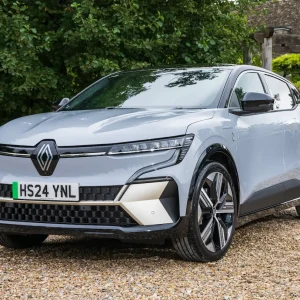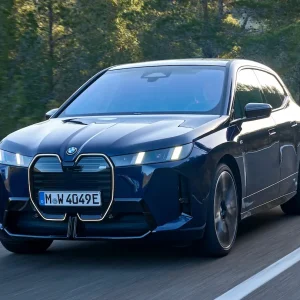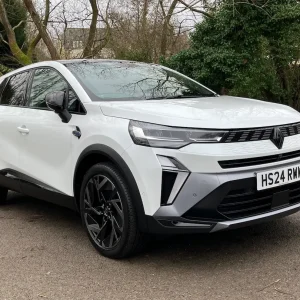We’re not alone in having been wowed by Hyundai’s Ioniq 5 EV since it made its debut late last year. However, until now we were yet to drive what should, based on price at any rate, be the range’s most impressive offering – the one with the most powerful, all-wheel drive powertrain. So, is this really the best of the bunch, or an unnecessary excess when the rear-wheel drive version is already so good?
Well, the all-wheel drive model certainly delivers when it comes to performance. Using an electric motor to power each axle, it has a total output of 305hp, which puts it in high-end hot hatch territory, and despite the heavy weight associated with EVs there’s acceleration to match. 0-62mph in 5.2 seconds is quoted, and from behind the wheel seems very realistic. The way the car gains speed is highly impressive and a little bit intoxicating, with the usual instant response of an EV to the accelerator pedal only adding to the sensation. And with very little audible accompaniment to the speed gain, other than a very faint whine, a keen eye needs to be kept on the speedometer to ensure continued legality.
One of the things everyone says about the Ioniq 5 is that it’s bigger than it looks in pictures, and it’s true that this is a fairly large car – longer and wider than and nearly as tall as Hyundai’s Tucson family SUV. However, any ideas that this might lead to sluggish, wallowy handling can be dismissed immediately. With the weight of the batteries low-down there is little body roll to speak of, and rather than being a party-pooper the all-wheel drive system almost brings a sense of rally car to the proceedings, with a lovely balanced feel to the handling that really boosts driver engagement, uncommunicative steering notwithstanding. Don’t be thinking that Hyundai’s engineers have sacrificed ride quality to achieve this either, as the level of comfort particularly at speed is impressive – the Ioniq 5 can make even gliding down a typical British pock-marked B-road a relaxing experience.
As well as the all-wheel drive powertrain, our test car was also our first Ioniq 5 to be specced in the range-topping Ultimate equipment grade. One impressive standard feature of this is an augmented reality head-up display, with useful elements such as video game-style scrolling arrows to tell you which lane you should be in at junctions.
The Ioniq 5’s interior design is superbly judged – modern and crisp without going overboard, with the retention of stylishly integrated physical controls for ventilation and even audio underneath twin 12.3in screens showing Hyundai’s designers haven’t thrown the user-friendliness baby out with the futuristic bath water. Even with the range-topping spec of our test car, if you hunt around the cabin one or two scratchy plastic items can be found, but the feel of the bits you touch most of the time is very high quality.
With no transmission tunnel running through the floor there’s a great sense of space, and even basketball players would probably be very comfortable in the back, while the boot is fairly commodious, though perhaps slightly shallower than you might expect.
Overall then the Ioniq 5 remains a great EV – but to return to our opening question, is this the best variant in the range? The all-wheel drive powertrain comes with a 73kWh battery pack which can also be had with the rear-wheel drive version (a slightly larger 77.4kWh battery will replace it soon), and under official testing the rear-wheel drive version offers a slightly longer range, at 281 miles versus the all-wheel drive’s 268 miles with Ultimate spec (lesser Premium grade models offer 300 miles and 287 miles respectively). The rear-wheel drive is also more than £3,000 cheaper on P11D, and with 217hp it isn’t exactly slow. All of which means that while the all-wheel drive version is great fun, for most fleet applications the rear-wheel drive will have a slight edge.
Hyundai Ioniq 5 73kWh AWD Ultimate
P11D: £49,235
Residual value: 43.7%
Depreciation: £27,732
Fuel: £4,153
Service, maintenance and repair: £2,186
Cost per mile: 56.78p
Range: 268 miles
CO2 (BIK %): 0g/km (2%)
BIK 20/40% a month: £16/£33
Luggage capacity: 527 litres
Engine size/power: 305hp with 73kWh battery





